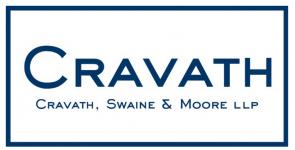The Cravath Scale is a compensation model adopted by top-tier law firms to ensure transparency and predictability when it comes to lawyer salaries. It offers competitive salaries and enables firms to attract & retain top talent, manage their budgets, and foster a level playing field among competitors. Despite its successes, the Scale has been criticized for its lack of merit-based rewards, the financial burden on firms, the potential to foster a culture of overwork, and lack of flexibility for individualized compensation. Despite its criticisms, the Scale has significantly impacted the legal profession, influencing how firms structure their comp packages and set trends internationally. While it may not be ideal for all firms, its influence on young lawyers' careers is undeniable.

1. What is the Cravath Scale?
The Cravath Scale is a lockstep compensation model developed by Cravath, Swaine & Moore, a leading law firm in New York City. It establishes fixed pay scale levels for associates of various tenures and prescribes annual salary increases based on tenure.
- To understand where the Cravath Scale sits in the broader industry landscape, see Everything You Ever Wanted to Know about Law Firm Compensation Plans, which breaks down how law firms determine salaries and bonuses across associate and partner ranks.
2. What are the benefits of using the Cravath Scale?
The benefits of using the Cravath Scale include reducing turnover, budget planning, creating a level playing field among top-tier law firms, and providing graduates with salary progression.
- While the Cravath Scale sets a baseline, real pay can diverge by geography, experience, or practice—What Lawyers Make the Most Money by Location, Experience, Practice Area and More offers useful real-world comparisons.
3. What are some criticisms of the Cravath Scale?
Criticisms of the Cravath Scale include a lack of merit-based rewards, financial pressure on law firms, creating a culture of overwork, limited flexibility, and not being suitable for all firms.
4. What implications does the Cravath Scale have for the legal profession?
The Cravath Scale has significant implications for the legal profession as it shapes how top law firms attract talent, structure their compensation packages, and maintain their competitive standing. It also contributes to standardizing pay within the industry and defines the financial dynamics of working in Big Law.
- One consequence of high fixed salaries and billable expectations is stress. For a deeper look at that tension, see Work-Life Balance and Compensation Trade-Offs in the U.S. Legal Profession.
5. Is the Cravath Scale suitable for all law firms?
No, the Cravath Scale may not be viable for smaller or mid-sized firms or those outside major markets. These firms may not have the financial capacity to match the Scale's high pay rates and might prefer different compensation models more suited to their operational style and capabilities.
- The Cravath Scale has moved upward over the years. A useful retrospective is Analyzing the Impact of the Associate Salary Increase at Top Law Firms, which tracks how first-year and midlevel salaries have shifted.
The Cravath Scale, named after the Cravath, Swaine & Moore LLP, one of the oldest and most prestigious law firms in the U.S., is a salary structure that establishes a benchmark for lawyer compensation in the United States, specifically for associates. It is influential, driving salaries nationwide and internationally across top-tier law firms—often termed "Big Law"—. This article provides a comprehensive understanding of the Cravath Scale's origin, operation, benefits, criticisms, and implications for the legal profession. While the Cravath Scale sets a strong foundation, understanding broader compensation trends can help attorneys maximize their earnings — see Understanding Law Firm Compensation: How to Earn a Good Salary as an Attorney.
- Even under a lockstep system, savvy attorneys (especially lateral hires) may negotiate additional benefits or bonuses—see The Ultimate Guide to Attorney Salary Negotiations for strategies that can supplement a rigid scale.
Origins of the Cravath Scale
The Cravath Scale, named after Cravath, Swaine & Moore LLP, originated in 2007 following a decision by the firm to increase the annual pay for its first-year associates from $145,000 to $160,000. This move set a precedent among top-tier firms, causing them to adjust their compensation structures to stay competitive. The subsequent ripple effect resulted in the Cravath Scale becoming the de facto standard for Big Law compensation in the United States.
The Scale uses a lockstep compensation system, which differs significantly from the 'eat-what-you-kill' model. While the latter ties pay directly to an attorney's performance and billable hours, the lockstep system ensures that salaries increase with every additional year of service at a predictable, pre-set rate. To see how the Cravath model influences pay across the broader U.S. legal market, consult the 2026 attorney salary guide, which breaks down data beyond elite firms.
Beyond the Cravath model, our Complete Attorney Compensation Report 2025-2026 provides a definitive guide to salaries across all U.S. markets.
- When comparing Cravath-modeled pay to actual firm practices, BigLaw Firm’s Salaries and Bonus Scale offers concrete examples of how large firms implement (or depart from) strict lockstep rules.
Understanding the Cravath Scale
The Cravath Scale functions as an annual salary scale that increases based on an associate's years of tenure within a firm. This allows for clear salary progression, as first-year associates earn a specific amount that increases as they gain more experience and seniority.
The transparency of the Cravath Scale lets every associate know their expected earnings trajectory from their first day in the firm. By implementing the Cravath Scale, law firms ensure competitive compensation to attract top talent from law schools while maintaining salary parity across their associate workforce.
- To see how the Cravath Scale is evolving in real time, consult 2024-2025 BigLaw Bonuses and Salary Scale: A Complete Guide to the Cravath System and Industry Trends, which tracks recent adjustments and bonus benchmarks.
Benefits of the Cravath Scale
The Cravath Scale, a salary structure many top-tier law firms use, provides a clear and predictable pathway for associate compensation. Named after the prestigious law firm Cravath, Swaine & Moore LLP, the Scale has revolutionized how Big Law firms attract, retain, and compensate their associates. Not only has it standardized salaries across the legal profession, but it has also transformed how law firms and their associates approach financial planning and career growth. The benefits of the Cravath Scale, while numerous, primarily revolve around six key areas: transparency, predictability, talent attraction, turnover reduction, budget planning, and creating a level playing field among firms.
• Transparency: The Cravath Scale clearly outlines the salary progression for associates, providing transparency that can reduce misunderstandings and foster trust within the organization.Sample Scenario: An associate joins a law firm and immediately knows their potential earnings for the first and subsequent years, assuming they stay with the firm. This clarity of information eliminates any uncertainties and can help set clear financial expectations.
• Predictability: The Scale provides predictable salary increases tied to an associate's tenure rather than their performance. This predictability enables the law firm and its associates to plan their finances effectively.
Sample Scenario: An associate in their third year knows they will receive a predetermined increase in their salary in their fourth year. With this predictability in mind, they can plan their finances, investments, or major life decisions, such as buying a house or starting a family.
• Attracting Talent: By offering competitive, transparent, and predictable compensation, firms using the Cravath Scale are more likely to attract top talent graduating from law schools.
Sample Scenario: A top-ranking law school graduate is choosing between several law firms. The firm that uses the Cravath Scale provides clear information about salary progression, making it an attractive choice as graduates can anticipate their income over the coming years.
• Reducing Turnover: The Scale can help reduce turnover by eliminating salary negotiations and minimizing pay discrepancies, which can improve job satisfaction and retain talent.
Sample Scenario: An associate at a law firm feels secure knowing their salary progression is ensured and doesn't depend on negotiations or favoritism. This assurance might lead them to stay longer with the firm, reducing turnover rates.
• Budget Planning: The Scale allows law firms to manage their budgets effectively as the salaries for associates of various tenures are pre-set and predictable.
Sample Scenario: When a law firm plans its annual budget, it can accurately forecast the salary expenses for the next fiscal year because of the Cravath Scale's predefined salary increases.
• Level Playing Field: The Scale fosters a level playing field among top-tier law firms as it standardizes compensation, allowing firms to compete on factors other than salary.
Sample Scenario: Two law firms are vying to hire the same top-notch law school graduate. Since both firms use the Cravath Scale, the decision comes down to factors other than salary, such as firm culture, work-life balance, or professional development opportunities.
- Critics of rigid lockstep systems often cite flexibility and fairness issues; for a practical alternative, see Fair and Competitive Compensation Strategies in Law Firms, which examines hybrid and market-based models.
See Related Articles:
- Top 10 Reasons Why High Junior Associate Salaries Are Destroying the Legal Profession
- Big Law Salaries
- BigLaw Firm's Salaries and Bonus Scale
- Everything You Ever Wanted to Know about Law Firm Compensation Plans
Criticisms of the Cravath Scale
While the Cravath Scale has garnered significant praise for its transparency and predictability, it has also faced its share of criticism. Detractors have raised concerns about the rigidity of the model, its impact on firm culture, and suitability for a diverse range of law firms. Critics argue that its one-size-fits-all approach to compensation may not serve the best interests of high-performing associates, smaller or mid-sized firms, or those grappling with economic uncertainty. The following are the key criticisms often leveled against the Cravath Scale: While the Cravath Scale sets the tone for elite firm salaries, The Complete Attorney Compensation Report offers a full picture of how those benchmarks compare across firms nationwide.
- The effectiveness of any compensation model depends heavily on retention. Explore Optimizing Lawyer Retention: The Critical Role of Compensation Structures in Law Firms to see how a firm’s pay design affects turnover and loyalty.
Beyond associate scales, the ROI of equity and non-equity partnerships is examined in Law Firm Partner Compensation Structures.
Lack of Merit-Based Rewards: Critics argue that the lockstep model doesn't reward high-performing associates adequately, which can lead to dissatisfaction and attrition among top performers. High-performing associates who bill more hours or bring in more clients than their peers may feel their contributions are not being adequately rewarded.
Financial Pressure on Law Firms: The Scale can significantly burden law firms, especially during economic downturns. Maintaining the set pay levels to attract and retain talent can become challenging when the firm's revenues are low or uncertain.
Culture of Overwork: The high salaries established by the Cravath Scale can potentially foster a culture of overwork. To justify these compensation packages, firms often expect associates to bill many hours, leading to stress, burnout, and a poor work-life balance.
Limited Flexibility: The Scale's lockstep system offers limited flexibility for individualized compensation, which could be problematic for firms that prefer a more nuanced approach to associate pay based on factors such as specialty, performance, or market conditions.
Not Suitable for All Firms: The Cravath Scale may not be viable for smaller or mid-sized firms or those outside major markets. These firms may not have the financial capacity to match the Scale's high pay rates and might prefer different compensation models more suited to their operational style and capabilities.
Implications for the Legal Profession
The Cravath Scale has significant implications for the legal profession. It shapes how top law firms attract talent, structure their compensation packages, and maintain their competitive standing. It also contributes to standardizing pay within the industry and defines the financial dynamics of working in Big Law.
The Scale has also set trends internationally, influencing top law firms in other countries to align their compensation with it. However, it's worth noting that its prevalence is primarily within large, market-leading law firms. Many smaller or mid-sized firms, or those outside major markets, may not follow the Cravath Scale, instead opting for compensation models better suited to their size and capabilities. To see how the Cravath Scale fits into broader lifestyle and earning comparisons, explore Work-Life Balance and Compensation Trade-Offs in the U.S. Legal Profession.
Conclusion
The Cravath Scale has profoundly impacted compensation strategies within the legal profession. Despite criticisms, the system offers transparency and predictability that benefits both associates and law firms. While it may not be the ideal solution for all, its influence on the financial trajectory of many young lawyers' careers is undeniable. As the legal profession continues to evolve, the Cravath Scale will likely remain a topic of spirited discussion.
- Because smaller firms rarely can absorb rigid lockstep models, consider the perspective from Winning the War for Talent: My Guide to Recruiting, Compensating and Growing Small Law Firms on how compensation must adapt for smaller or boutique settings.
Lateral Compensation Beyond the Cravath Scale
While the Cravath Scale remains a prominent benchmark for associate compensation among traditional BigLaw firms, lateral hires—attorneys moving between firms once they’ve accrued experience—often encounter distinct compensation structures influenced by negotiation leverage, firm needs, and geographic market pressures. For attorneys and firms looking to optimize pay structures beyond traditional benchmarks, our Attorney Compensation Strategy article provides actionable insights.
For a current and reliable snapshot, consult the BigLaw Lateral Salary Guide (2023–2025 Data). This guide provides updated figures on how lateral associates and partners are compensated in today’s market, capturing salary benchmarks, signing bonuses, and performance incentives outside the uniformity of the Cravath framework. A full breakdown of current firm-by-firm pay under the Cravath scale appears in The Highest-Paying Law Firms in the United States.




